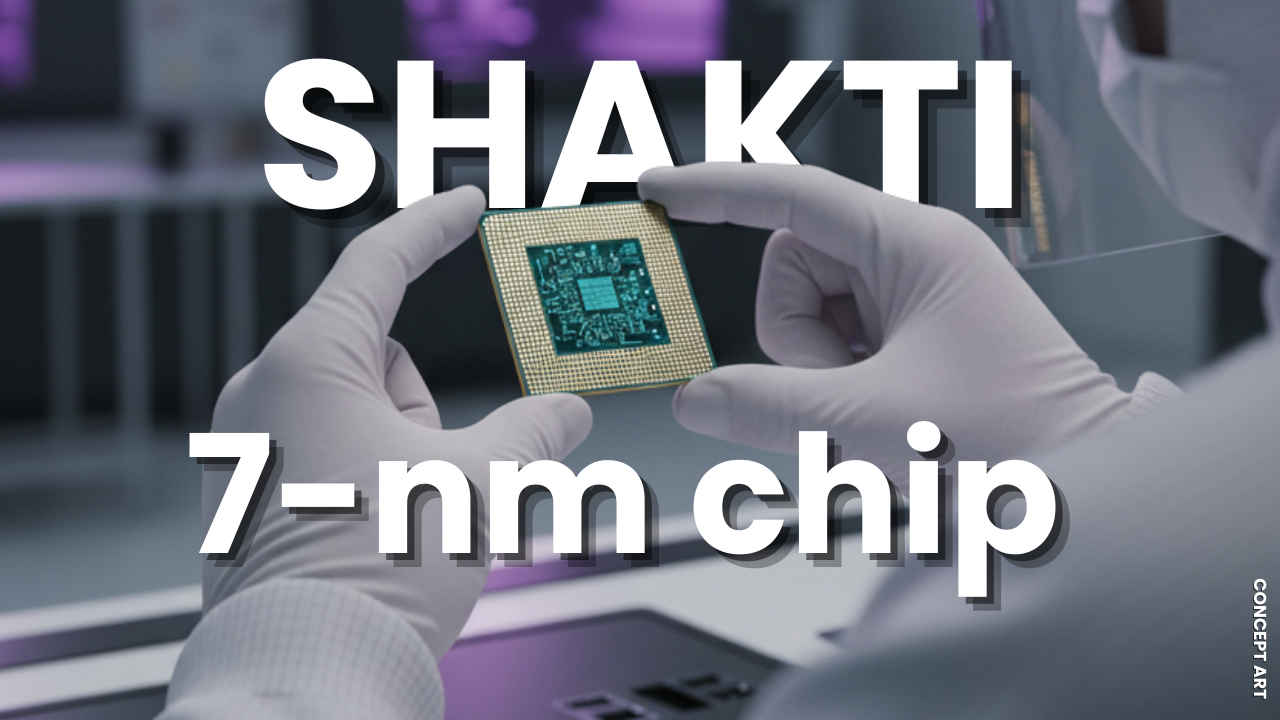Science
IIT Madras Set to Create India’s First Indigenous 7-nm Chip by 2028

India is taking a significant step towards enhancing its technological capabilities. The Indian Institute of Technology (IIT) Madras has announced plans to develop the country’s first indigenous 7-nanometre processor by 2028. This ambitious project, known as the Shakti chip, was highlighted during a recent visit by Union Minister Ashwini Vaishnaw to the research team at IIT Madras, marking a pivotal moment in India’s pursuit of self-reliance in technology.
The Shakti initiative builds on years of dedicated work at the Prathap Subrahmanyam Centre for Digital Intelligence and Secure Hardware Architecture (PSCDISHA) at IIT Madras. Under the leadership of Prof. V. Kamakoti, the Shakti processor family originated in 2018, evolving from academic exploration into a strategic national project. The upcoming 7-nm chip aims to transition from theoretical models to a robust, globally competitive silicon solution intended for use in financial systems, defence, and core infrastructure.
RISC-V Architecture at the Core
At the heart of the Shakti project is the RISC-V architecture, an open-source instruction set that allows India to design chips without the constraints of licensing fees associated with other popular architectures like ARM and x86. This level of control is vital for India’s long-term digital sovereignty. The IIT Madras team has already made progress in this direction, developing and testing actual silicon chips.
The project began with RIMO, the first chip developed in 2018, followed by Moushik in 2020, designed specifically for Internet of Things (IoT) applications. Most recently, the IRIS chip was introduced in 2025, specifically designed to withstand radiation and produced in collaboration with the Indian Space Research Organisation (ISRO). The successful unveiling of IRIS earlier this year underscored the capabilities of India’s semiconductor ecosystem, demonstrating that design, fabrication, and assembly can take place entirely within the country.
Prof. Kamakoti emphasized the significance of this achievement, stating, “That the chip design, fabrication, packaging, motherboard, assembly, software and boot – all happened inside India – is yet another validation that the complete semiconductor ecosystem and expertise exists within our country.”
The Challenge of Developing 7-nm Technology
Creating a 7-nm chip presents new challenges due to its complexity and performance requirements. Minister Vaishnaw highlighted the importance of this advancement, stating, “We will be designing a 7-nanometre processor which is optimized for performance and energy efficiency… for financial services, communications, defence, and strategic sectors.” The minister confirmed that the chip is expected to be ready by 2028, alongside a domestic fabrication line capable of producing chips at this node.
India’s current semiconductor facilities are based on older technology, but the ₹76,000 crore Semicon India Programme is catalyzing next-generation projects. This initiative involves partnerships with major industry players such as Tata Electronics, Micron, and IGSS Ventures. The establishment of a 7-nm capable fabrication facility could lead to collaborations with global leaders like TSMC, Samsung, or Intel Foundry Services.
The Importance of 7-nm Technology
The significance of the 7-nm technology extends beyond national pride; it represents a critical step towards reducing reliance on foreign silicon for essential infrastructure. Chips manufactured at this scale are integral to modern smartphones, high-performance computing systems, artificial intelligence accelerators, and cloud data centers. Achieving this milestone with a homegrown design and local fabrication would position India as a competitive player in the global semiconductor landscape.
The Shakti chip’s server-grade capabilities are designed to meet the demands of real-world applications, including secure government cloud services, indigenous artificial intelligence and machine learning platforms, and strategic computing within defence networks. The timeline set by the Indian government is ambitious, but it signals a clear intent to push the boundaries of indigenous semiconductor technology.
The next three years will be crucial for the Shakti project. If India successfully aligns its chip design and fabrication capabilities by 2028, it will not only unveil an advanced piece of hardware but also solidify a new geopolitical stance—one where the chips powering the nation’s networks, servers, and systems are made in India, for India, and by India.
-

 World3 months ago
World3 months agoSBI Announces QIP Floor Price at ₹811.05 Per Share
-

 Lifestyle3 months ago
Lifestyle3 months agoCept Unveils ₹3.1 Crore Urban Mobility Plan for Sustainable Growth
-

 Science3 months ago
Science3 months agoNew Blood Group Discovered in South Indian Woman at Rotary Centre
-

 Sports3 months ago
Sports3 months agoBroad Advocates for Bowling Change Ahead of Final Test Against India
-

 World3 months ago
World3 months agoTorrential Rains Cause Flash Flooding in New York and New Jersey
-

 Top Stories3 months ago
Top Stories3 months agoKonkani Cultural Organisation to Host Pearl Jubilee in Abu Dhabi
-

 Science3 months ago
Science3 months agoNothing Headphone 1 Review: A Bold Contender in Audio Design
-

 Top Stories3 months ago
Top Stories3 months agoAir India Crash Investigation Highlights Boeing Fuel Switch Concerns
-

 Sports3 months ago
Sports3 months agoCristian Totti Retires at 19: Pressure of Fame Takes Toll
-

 Business3 months ago
Business3 months agoIndian Stock Market Rebounds: Sensex and Nifty Rise After Four-Day Decline
-

 Politics3 months ago
Politics3 months agoAbandoned Doberman Finds New Home After Journey to Prague
-

 Top Stories3 months ago
Top Stories3 months agoPatna Bank Manager Abhishek Varun Found Dead in Well









